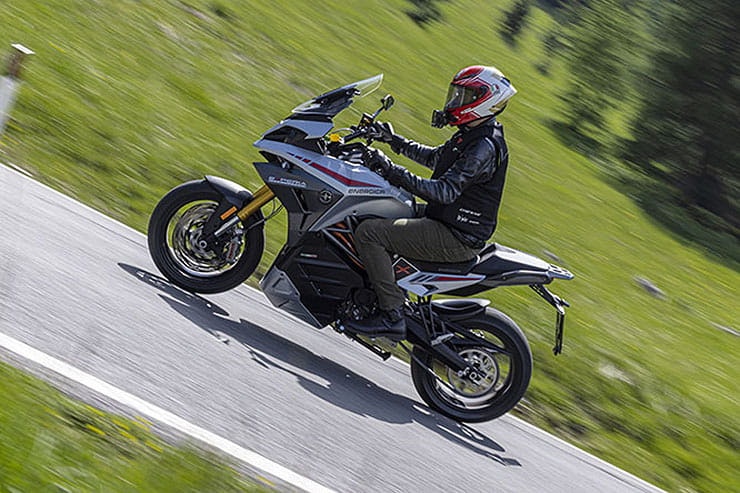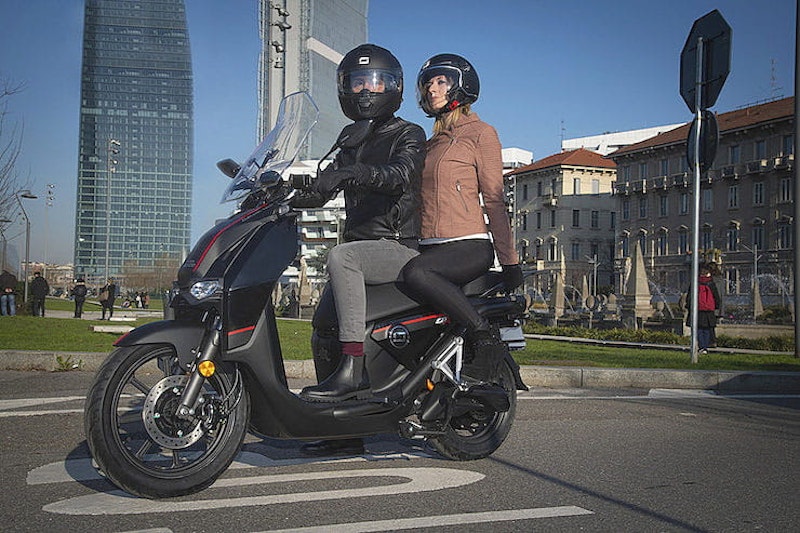It won’t have escaped your attention that electric power is coming to recharge the motorcycle industry with deadlines now in place to phase out fossil-sourced fuel over the next 10-15 years.
While electric makes up a tiny portion of PTW (powered two-wheeler) sales in the UK at 5%, this figure is steadily rising, while more and more intriguing environmentally conscious options are hitting the market with every passing year.
This means there is an increasing likelihood that you will throw your leg over an electric motorcycle or scooter soon, even if it’s just to have a go.
Before you do, however, it is worth preparing yourself for experiencing some of the more unusual characteristics of electric power vs ICE (internal combustion engines) when out on the road.
Luckily for you, you’ve come to the right place with these handy hints, tips and tricks…
How does an electric motorcycle work?
Recently, we went behind-the-scenes at one of the most influential, dedicated EV companies – Energica – who up until know have plied their expertise with motorcycling but who have ambitions to provide the complete powertrain to manufacturers of other vehicles, including boats or cars. Interviewing both the CTO and Sales & Marketing Director gave us quite the insight into how this 12-year-old Italian company, and here’s the full article and accompanying video.
Is riding an electric motorcycle different to riding an ICE motorcycle?
Yes, it is different… but rest assured, the physics of riding an electric motorcycle or scooter should only require a few adjustments that won’t take long to get used to in a physical sense. Mentally, on the other hand…
Nevertheless, the fundamentals of riding a motorcycle or scooter safely - such as the ‘lifesaver check’ - where you are permitted to take one remain in place.
For anyone who has ridden a ‘twist and go’ style model, an EV’s similar gearbox-less technique will seem very familiar, albeit perhaps a little unusual to replicate the action on a larger model.
Those are the basics, now you can focus on the key considerations - both on the motorcycle and out on the road - one must take when riding an electric motorcycle or electric scooter for the first time.
Are electric bikes as powerful and torquey as regular bikes?
100% torque available for instant acceleration
All riders should take caution initially to acclimatise to surge
Linear motion with no gear-changes
Experienced riders might find it trickier to adapt than novices
Torque figures - for a motorcycle especially - rank alongside ‘brake horsepower’ as among the most prominent numbers you’ll see when reading up on a petrol-fuelled motorcycle.
But while mechanical torque varies depending on how it is set-up with every ICE model, every electric motorcycle is equipped with a full 100% of torque all the time.
It means you have instantaneous acceleration and pulling power waiting for even the smallest hint of the throttle. While it doesn’t mean you’ll be winched into a wheelie from the lights - fortunately most models are too heavy to do that - you should anticipate the urgency of such a surge.
Indeed, while larger capacity motorcycle have always been able to reach licence-threatening speeds from a standstill in no time at all, even modest electric models have the potential to get take off even quicker, though once you’ve reached your cruising speed it settles into a calm plateau that isn’t bouncing off the rev limiter.
While all electric models will initially respond to the twist of a throttle identically, thereafter it will depend on what you are riding as to whether you develop a ‘need for speed’.
Like we say, it is worth being cautious during the first touches to get used to both the surge of linear forward motion, as well as the unusual sensation of doing so without having to click up the gears.
It means even experienced riders will need to adjust to the machine between their legs. For new licence holders, however, electric motorcycles and scooters will feel like relative a doddle to ride without the fuss of having to engage the clutch and change gear.
However, if you’re just starting out, be mindful of that instant speed too, especially on congested roads or around busy pedestrian areas.
Are electric bikes more dangerous than regular bikes?
Safety awareness of riding without alerting engine noise
Monotonal sound difficult to distinguish in noisier environments
Be aware of both other road users and distracted pedestrians
Rider will more easily notice the sound of an approaching vehicle
Amplified wind and engine roar takes getting used to
Though many have referenced the absence of a conventional motorcycle’s audibly delicious ICE engine as a key reason for dismissing the relative silence of electric, there is also a safety consideration to take into account.
Indeed, with motorcycles and scooters taking up a far smaller portion of the road compared with cars, it is wise to take a cautionary approach on the road by assuming you haven’t been seen by the vehicles around you.
With this in mind, the noise a motorcycle makes is a big asset when it comes to alerting those around you as you begin advancing.
It’s a characteristic all-but-gone with electric motorcycles and scooters because - while they are not silent - the ‘buzzy whoosh’ sounds they do emit are not terribly loud either. Moreover, it is a noise that doesn’t change much in tone either, making it more susceptible to blend into the din of urban environments.
It means riders on electric motorcycles and scooters must remain vigilant at all times in order to avoid SMIDSY (“Sorry mate, I didn’t see you”) incidents, whether that’s other road users or unawares pedestrians, particularly if they step into the road while glued onto their phones…
There is a positive flip side to this, however… you’re more likely to hear an approaching (petrol fuelled) car as a result when out riding.
Also, while the absence of a familiar engine note is one thing, you’ll also discover just how much noise can be generated by wind and the road itself without mechanicals to mask them.
It is worth noting here that a number of manufacturers have flirted with the idea of building in a ‘soundtrack’ of sorts that replicates the sound of an engine both as a safety feature and to simulate sporting credentials.
How long does a charge last on an electric motorcycle?
Understanding battery use relative to your riding
Working out how different environments affect range
Researching public recharging points
Learning to become a more frugal rider
There is no doubt ‘range anxiety’ - the fear of your EV running out of battery power - exists when riding an electric motorcycle or scooter… but it is not as exaggerated as more cynical naysayers would scaremonger to you.
On the other hand, while EV are quick to rubbish such notions of you and your motorcycle parked up at the side of the road with nowhere to plug it in, frankly it’s in our DNA to panic when you see a battery teetering on a single bar.
Indeed, newcomers to electric might find it beneficial to keep a record of your journeys during the initial weeks and months of ownership to develop an idea of battery life relative to the range of your regular journeys.
Of course, external elements such as a throttle-happy wrist, weight, road conditions and the flow of traffic will have an impact on range, so build in a safety buffer of a few percent on either side to ensure you’re not left standing.
But much like we rarely forget to keep our phones charged (or our cars filled with fuel), home charging capabilities and a rapidly increasing recharging network out on the road should eventually make keeping your motorcycle juiced second nature too. Some of the latest models come with removable batteries, ideal for charging at work or home at your convenience rather than trailing leads here and there. Equally, why not let the charging take place when you know your bike will be parked up; during work hours or overnight.
In short, be prepared… just as you would on any motorcycle tour.
Do electric bikes have engine braking?
No engine braking built-in
Heavier in weight
‘Silent and Armed’ warning
Whereas ICE machines are able to resist gravity to slow when heading downhill, there is no such benefit when riding (heavier) electric motorcycle or scooter.
With no engine braking built in, it means if you’re used to letting a machine take some of the responsibility when heading down on a gradient, make sure you have one finger poised on the brake of any electric motorcycle to prevent it getting away from you.
Also, since electric models are ‘silent and armed’ with instant torque, take care to check you switch it off whenever you get off.
Because, if you leave it engaged and you happen to be standing or leaning close to it, a slip on the throttle will suddenly and quickly send it on its way with no-one to stop it.
What are the other benefits of electric bikes?
Things you won't have to do:
Get reluctantly whipped up in the next fuel shortage frenzy of long queues and panic buying
Contribute another penny to the big petroleum companies by sourcing fuel from a pump
Change the engine oil and filter
Check oily fluids
Replace spark plugs, timing belts and clutches
Additional reporting by Michael Mann

